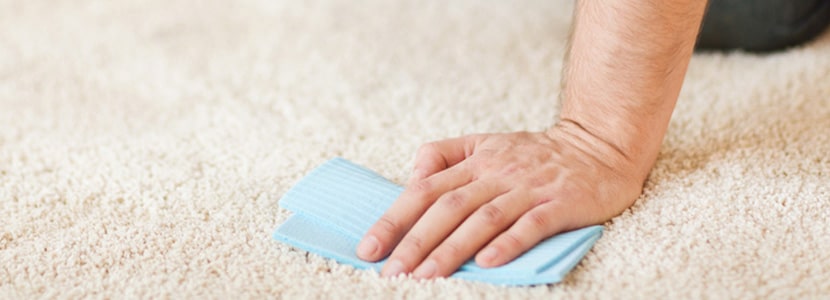In Florida flooding can be a concern – especially if you live in a low lying area. Heavy summer rains or tropical storms and hurricanes can bring lots of rain and provide a potential for flooding. Additionally, a broken pipe or overflowing tub or sink adds to your risk of flooding.
If your home floods and you have carpet flooring, you may be worried that you won’t be able to keep your flooring. While wet carpet and padding can be a problem, fast action can save you from having to replace your flooring.
The Hidden Danger of Wet Carpet
The big danger with wet carpet is mold. If your carpet and padding stay wet for a long period of time, mold can begin to grow quickly. Mold loves dark, humid environments – and wet carpet provides the perfect environment for it to multiply.
Mold can be a major health risk. Signs of mold irritation are similar to that of allergies or asthma. It can irritate your nose, eyes, throat, and lungs. A sure sign that mold has begun to grow is a bad smell coming from your carpet. Mold can be cleaned up and eliminated, but it requires fast action.
Elbow Grease Required
The longer you have to wait to clean-up, the more time mold has to grow. Wait too long and you’ll be better off just replacing your carpet and padding. However, if you’re able to start cleaning there are several methods to get your carpet clean again:
- Remove excess water with a wet-vac – Suck up extra moisture and water with a wet-vac in order to get rid of the bulk of the water.
- Use fans to dry carpet quickly – It’s important to dry up all the water as quickly as possible. If you can, rent an industrial fan to dry your carpet fast. If that’s not an option run your fans 24 hours a day for a few days in order to dry out your carpet.
- Use dehumidifiers – Dehumidifiers are also a great option if you’re trying to get your carpets completely dry. A dehumidifier will suck the moisture out of the air helping to stop the growth of mold.
- Get the Bleach Ready – Bleach kills mold. Wash your walls and baseboards with bleach to stop mold from spreading.
- Steam clean your carpets – Whether you rent the machine yourself, or you hire a professional, steaming your carpet can get your carpets clean and the heat can help kill mold.
What About Padding?
While the steps above may help save your carpet, if you have padding underneath you will probably have to replace it. Padding has pores that mold can grow in, and it can be very hard to eliminate it. A carpet pad is like a sponge, it will suck up water – but it is nearly impossible to get it completely dry.
If the flooding in your home was fairly severe, separate your carpet from the padding and throw out the pad. You can replace the padding and restretch your carpet to save money.
Removing Your Carpet
Unfortunately, it isn’t always possible to get your carpets cleaned quickly after flooding. The first 48 hours are critical in stopping the spread of mold. After that, you might be better off removing and replacing your carpet. While it is more expensive, it is also the safer and healthier option.
If you want help removing your carpet, we can help remove it quickly and cleanly. Disposing of carpet can be difficult because it is bulky and heavy, we’ll help you save time, pain and mess with our carpet removal process.

